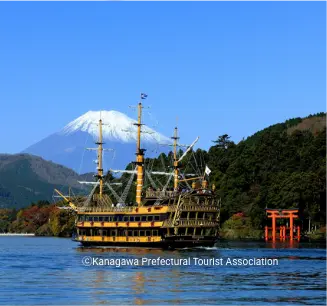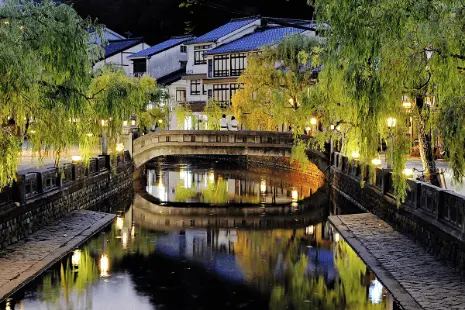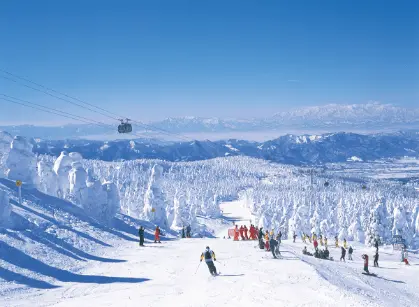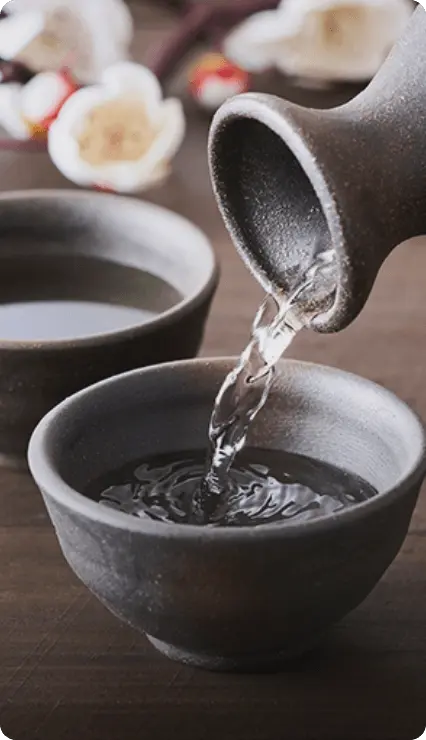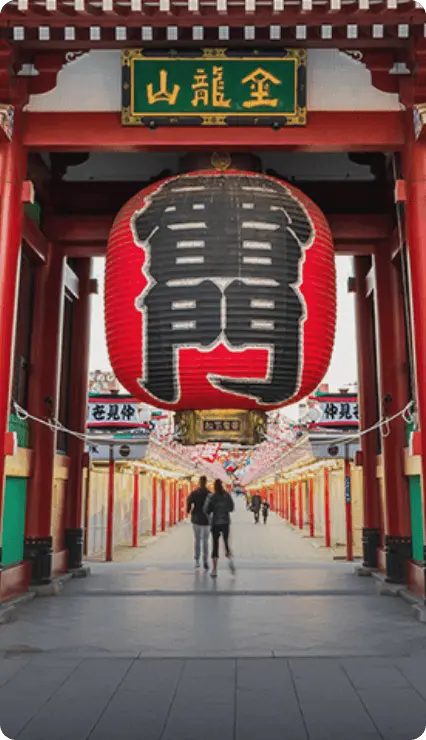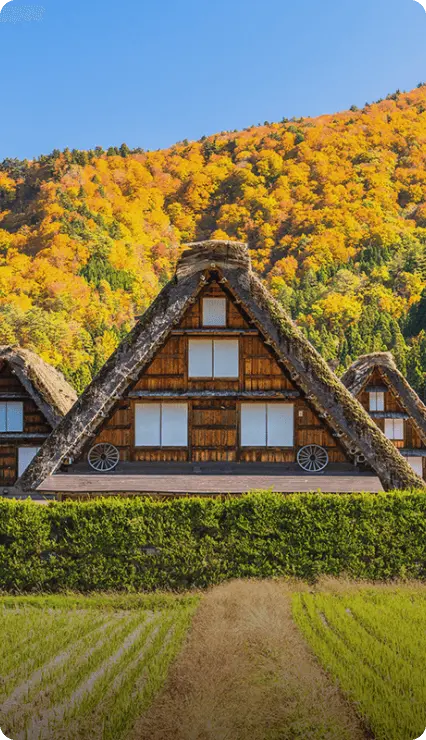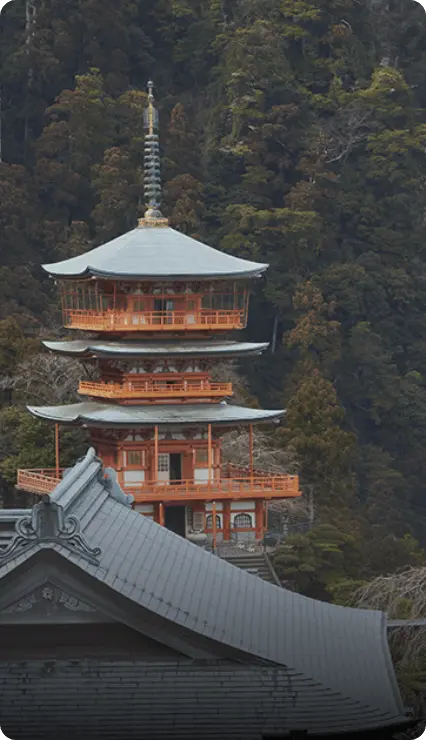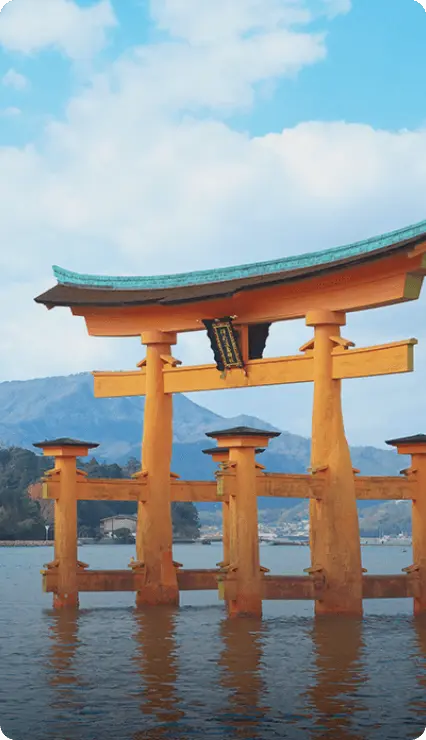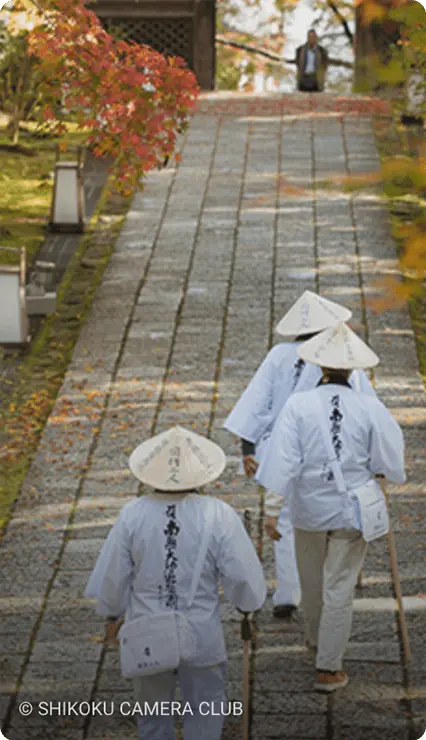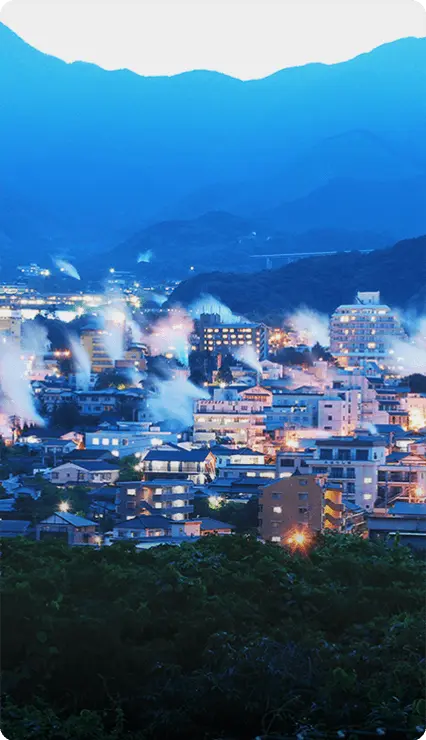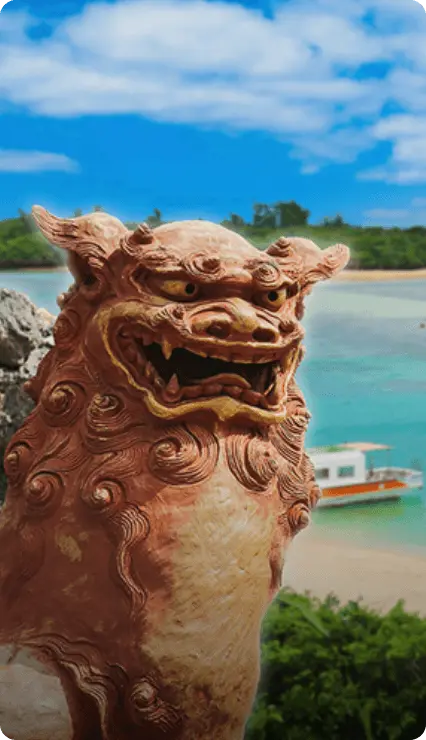Explore Japan
through the Four SeasonsAutumnSan'in / Setouchi / Shikoku

Autumnal Scenes and Cultural History in San'in, Setouchi and Shikoku
Experience a taste of life in late-Edo era Japan (1603–1868) among the ancient remnants of San'in, Shikoku and Setouchi, all areas famous for their natural beauty and historical landmarks. Japan is known globally for its visually distinct seasons and autumn is particularly special, as forests turn golden and crisp leaves carpet parks, gardens and natural sites.
The San'in, Setouchi and Shikoku regions are some of the best places in Japan to experience this seasonal spectacle and learn the rich history of Japan.

- 1
-

1
Explore Kinosaki Onsen
Hyogo
The traditional settlement of Kinosaki Onsen is a hot spring town in Hyogo prefecture that has been a popular well-being destination for over 1,300 years. Everything in Kinosaki Onsen is centered around rest and relaxation, and to that end, the town has the feel of a sprawling inn.
The springs are said to have healing properties, gifted to local people by their guardian deities. Historically, before one could enter the waters, they had to visit Onsenji Temple and pray to the deity. Today, a visit to the temple isn't required before entering the baths, but many visitors still pay their respects and offer thanks.
From its stone bridges to the sliding doors of the businesses that line the streets, Kinosaki Onsen offers an authentic Japanese experience. Rent a yukata – a traditional Japanese robe – and wander the streets under the iconic willow trees, stopping to visit one of seven different traditional hot spring bath houses here. Experience traditional-style bars and restaurants serving gourmet ingredients like Tajima beef (known as the source of calves raised for Kobe, Matsuzaka and Omi beef) and exquisite crab dishes.-
120mins
by train from Kinosaki Onsen Station to Tottori Station -
60mins
by train from Tottori Station to Yonago Station -
50mins
by bus from Yonago Station to Daisenji
-
- 2
-

2
Join an Eco Tour on Historic Mt. Daisen
Tottori
Mt. Daisen is revered as one of the holiest places in Japan. Regarded by locals as the home of the Japanese god of fire, visitors to the mountain will no doubt recognize a palpable sense of mysticism. After relaxing in the onsens of Hyogo, explore the outdoors revitalized.
Mt. Daisen has a variety of eco-tours providing an environmentally friendly way for visitors to explore this famous mountain. The Daisen Tour Desk has lots of options for autumnal excursions, from cycling tours with an electric-assisted bicycle to a beech forest walk that includes stops at Daisenji temple and Ogamiyama Shrine.
In light of the mountain's rich spiritual history, there are many so-called power spots that eco-tour participants will encounter en route. Such power spots are said to give visitors a profound sense of serenity and energy.-
50mins
by bus from Daisenji to Yonago Station -
45mins
by train from Yonago Station to Izumoshi Station -
20mins
by train from Izumoshi Station to Izumotaisha-Mae Station (changing at Kawato Station).
-
- 3
-

Kaguraden 3
Visit Izumo Taisha Grand Shrine, Japan's Oldest
Shimane
Mt. Daisen's many shrines have a profound religious history, but Izumo Taisha Grand Shrine, in the neighboring prefecture of Shimane, is in a class of its own. Thought to be the oldest and most important shrine in Japan, some of the most ancient historical accounts refer to the shrine's existence as far back as the early 700s.
Stroll through the imposing torii gates and explore the shrine and its grounds. The treasure hall of Izumo Taisha Grand Shrine displays ancient documents, art, and models of the shrine's original appearance. Over the centuries, Izumo Taisha Grand Shrine has been rebuilt many times.
In the main hall, you'll be rewarded with a glimpse into contemporary life at the shrine, where ancient traditions still prevail.-
25mins
by bus from Seimon-mae to JR Izumoshi Station -
195mins
by train from Izumoshi Station to Shin-Yamaguchi Station -
20mins
by train from Shin-Yamaguchi Station to Kokura Station -
15mins
by train from Kokura Station to Shimonoseki Station -
7mins
by bus from Shimonoseki Station to Karato
-
- 4
-

4
Explore Shimonoseki, the Fugu Capital of Japan
Yamaguchi
When it comes to Japanese cuisine, one of the most unique and daring dishes is pufferfish (blowfish), or fugu in Japanese. Fugu is famous as much for its subtle, delicate taste as for its difficulty to prepare. Japanese chefs must undertake intensive training for several years to master the art of preparing fugu for safe eating, a process involving the careful removal of its deadly poison and require a license to serve it.
While fugu can be intimidating to eat, there is no better place to try it this autumn than in Shimonoseki in Yamaguchi, the fugu capital of Japan. In Shimonoseki, locals call fugu "fuku" (meaning joy or fortune) because they think it will bring happiness. For years, markets in the area, such as Karato Market, have been known for providing the majority of Japan's wild fugu stock to those qualified to prepare it safely.
Shimonoseki's age-old markets operate auctions for the fish in a traditional way that is unique to the sale of fugu. Experience the distinctive culture of the area and try some of Japan's most infamous seafood straight from the source.-
15mins
by train from Shimonoseki Station to Kokura Station -
45mins
by train from Kokura Station to Hiroshima Station -
25mins
by train from Hiroshima Station to Miyajimaguchi Station -
10mins
by ferry from Miyajimaguchi Pier to Miyajima Pier -
10mins
by foot from Miyajima Pier to Itsukushima Shrine

5
Discover Hiroshima's Iconic Itsukushima Shrine
Hiroshima
Hiroshima's Itsukushima Island is home to one of Japan's most celebrated shrines. The image of Itsukushima Shrine, a UNESCO World Heritage site, and the associated thousand-year-old torii gate rising from the water as if floating is iconic. Commonly known in Japan as Miyajima (shrine island), the island is an incredibly tranquil place to observe the changing hues of autumn. The torii gate's ninth-generation iteration was recently unveiled following restoration work that began in 2019.
Enjoy the autumnal foliage while walking through the winding wooded paths. The vermillion Itsukushima Shrine is widely known for its grand and unique construction with a beautiful extended corridor to the sea. Observe the iconic torii gate balancing atop the ocean during the day or, along with the shrine, brightly lit at night. Alternatively, take a boat tour around the shrine for views not possible from land.-
30mins
by train from Miyajimaguchi Station to Hiroshima Station -
60mins
by train from Hiroshima Station to Onomichi Station -
5mins
by foot from Onomichi Station to Onomichi Port
-
- 5
-

6
Bike the Shimanami Kaido Cycle Route
Hiroshima / Ehime
The Shimanami Kaido is a 70 km long scenic cycling route that crosses the Seto Inland Sea, connecting Onomichi City in Hiroshima Prefecture with Imabari City in Ehime Prefecture. The route is popular among novice and more seasoned cyclists, with easy-to-follow routes, spectacular coastal scenery, and regular rest points complete with pumps, bike stands and essential amenities, including drinking water and toilets.
To complete your autumn tour, follow the course south, starting from Onomichi. Pass through some of the Seto Inland Sea's most beautiful islands while soaking up the warm autumnal sunshine and enjoying the vibrant foliage along the way. We recommend taking the route slowly, incorporating attractions, and staying overnight at a minshuku (family-operated, Japanese-style bed and breakfast) or campsite.-
60mins
by car from Imabari Station to Tosawashi Kougeimura QRAUD
*We recommend a rental car to most effectively traverse central Shikoku
-
- 6
-

7
SUP along the Niyodo River
Kochi
Stand-Up Paddleboarding (SUP) is a great way to see a different side of Japan and allows you to immerse yourself in the country's stunning nature. One of the best places to try SUP is on Kochi prefecture's Niyodo River, famed for its crystal-clear waters. Their color is known as Niyodo Blue, a blend of emerald green and turquoise blue. This place is often referred to as Japan's most beautiful river.
SUP is suitable for novices on the water and is a family-friendly, relaxing way to get some exercise and enjoy Kochi's autumnal splendor. Glide across the calm waters on top of a longboard and look out for Kochi's famed chinkabashi – low, submersible narrow bridges designed to withstand flood waters during periods of heavy rainfall.
A variety of tour operators (Niyodo River Outdoor Center, Niyodo River River Cruise, Niyodo River Canoe) provide SUP activity tours in this region.-
90mins
by car from Tosawashi Kougeimura QRAUD to Iya Valley

8
Step Back in Time in the Iya Valley
Tokushima
Before the arrival of modern building materials, local people used what was available to them to build bridges that would help them traverse difficult terrain. This autumn, walk on unique vine bridges from ancient times in the Iya Valley, one of Japan's three hidden places. The bridges are designated as an important tangible folk cultural property and their supporting vines connect to the surrounding forest, making them appear to be an extension of nature.
After exploring the valley's natural beauty, we recommend lodging at a nearby accommodation to rest and recharge before your next stop on this unforgettable autumn tour.-
130mins
by car from Iya Valley to Takamatsu Port -
60mins
by ferry from Takamatsu Port to Naoshima
-
- 7
-

"Red Pumpkin" ©Yayoi Kusama,2006 Naoshima Miyanoura Port Square
Photo/Daisuke Aochi
*This image may not be reproduced.9
Explore Naoshima
Kagawa
On the next leg of your autumnal adventure, immerse yourself in an island of art. Naoshima is a small island located in the Seto Inland Sea, between Okayama and Kagawa prefecture renowned for its huge art culture and multiple museums. Many of the island's top museums focus on contemporary art and are situated along the island's coast—making for lovely seaside views. Art House Project is another popular spot on the island and features a collection of old buildings such as vacant houses that have been either restored for viewing or converted into art venues where contemporary artists can make the facility as their art space.
One of Naoshima's most acclaimed spots is the Benesse House—a contemporary art museum and accompanying hotel designed by Tadao Ando where the grounds and space themselves were transformed into works of art. If you are staying at the hotel, you can see the museum until 11:00pm. For all other guests, the museum closes at 9:00pm. In addition to its art museum, the facility is home to numerous sculptures and displays that can be enjoyed along the shore and in the forest, including the famous Pumpkin and Red Pumpkin by Yayoi Kusama, both iconic symbols of Naoshima. Art lover or not, all visitors will feel inspired by this unique island.-
60mins
by ferry from Naoshima to Uno Port -
25mins
by train from Uno Station to Chayamachi Station -
20mins
by train from Chayamachi Station to Okayama Station
-
- 8
-

10
Discover Okayama Korakuen, one of Japan's Three Great Gardens
Okayama
Located in Okayama prefecture, Okayama Korakuen is one of Japan's Three Great Gardens. Each of the gardens is known for its history and beauty, and Okayama Korakuen is no exception. Despite being created for the personal enjoyment of the area's feudal lord, the garden has always been open to the public. While springtime brings with it cherry blossoms and the pink flowers of plum trees, autumn transforms the garden into a vibrant display of yellow, orange and red. Okayama Castle is a stunning backdrop visible through the trees from inside the garden, and Okayama Korakuen was designed to complement this exceptional architecture.
Explore Japan
through the Four Seasons
Kansai
While the city of Kyoto is perhaps the most well-known tourist destination in Kansai, the nation's former ancient capital is just one of many attractions. Kansai is renowned across Japan as the place where some of the country's most enduring spiritual, culinary and cultural traditions were formed.





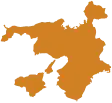






Hokkaido

Tohoku

Greater Tokyo

Central Japan

Kansai

San'in

Setouchi

Shikoku

Kyushu

Okinawa


